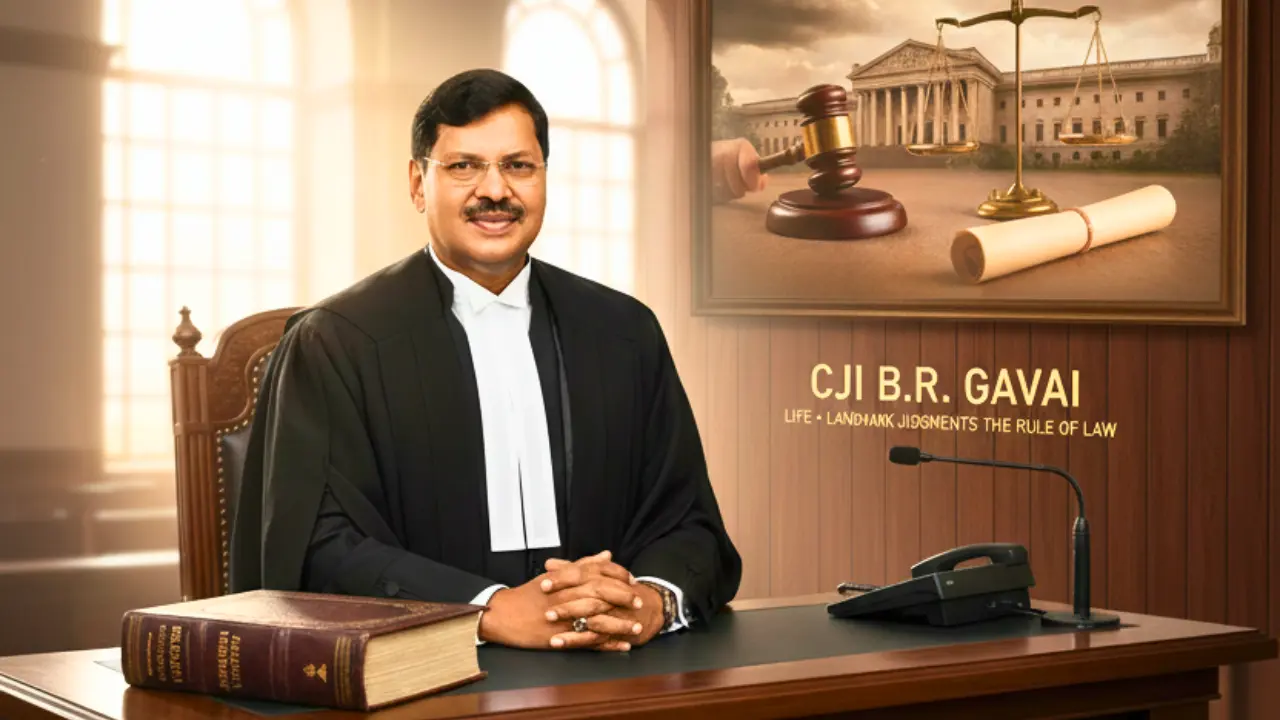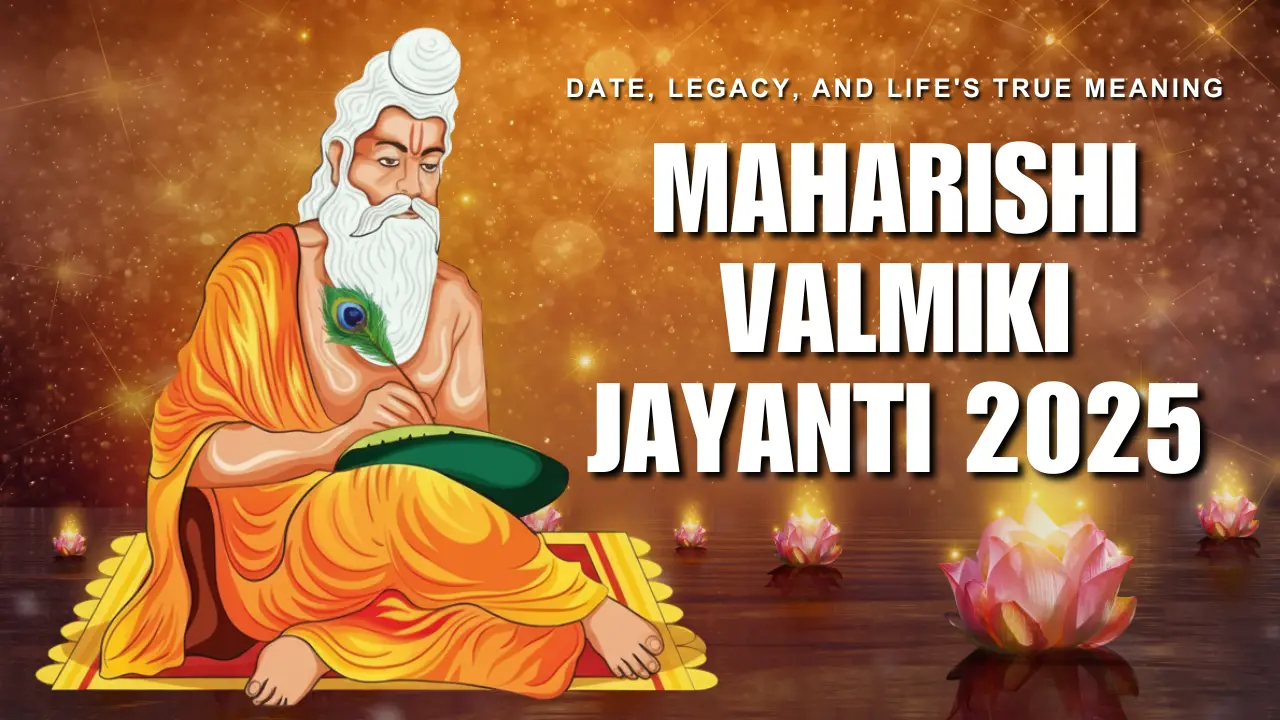The Indian judiciary, the third pillar of democracy, is currently helmed by one of its most compelling figures: Chief Justice of India (CJI) Bhushan Ramkrishna Gavai. His ascent to the top judicial office is not merely a professional achievement; it is a powerful testament to the transformative promise of the Indian Constitution, especially given his background. Taking the oath as the 52nd CJI on May 14, 2025, Justice Gavai has a relatively short but incredibly impactful tenure, scheduled to last until November 23, 2025.
In a rapidly changing legal and social landscape, the actions and philosophy of CJI B.R. Gavai set a critical tone. From his origins in the Vidarbha region of Maharashtra to his central role in delivering landmark Supreme Court verdicts, his journey encapsulates a deep commitment to social justice and the Rule of Law. This post delves into his inspiring life, his illustrious career, the public details of his assets, and the latest news shaping his time in office.
The Formative Years and Inspiring Life of B.R. Gavai
Born on November 24, 1960, in Amravati, Maharashtra, Justice B.R. Gavai‘s early life was significantly shaped by the legacy of his family and the political ferment around them.
A Family Rooted in Social Justice
Justice Gavai’s lineage is intrinsically tied to the socio-political movements of India. His late father, Ramkrishna Suryabhan Gavai (R.S. Gavai), was a towering figure in the Ambedkarite and Republican Party of India movement. He was a veteran politician who served as a member of the Maharashtra Legislative Council, a Lok Sabha MP, and a Governor of several states, including Bihar, Sikkim, and Kerala. This exposure instilled in young Bhushan Ramkrishna a profound understanding of historical injustices and the power of constitutional remedies.
- Education: Justice Gavai pursued his Bachelor of Arts and Bachelor of Laws (B.A. LL.B.) degrees from Nagpur University.
- A Trajectory of Grit: Reflecting on his humble beginnings, Justice Gavai once shared a compelling insight, noting that his educational journey began in a municipal Marathi-medium school—a reminder of the institutional gaps that still exist and that he carries into his judicial thought process.
The Illustrious Legal and Judicial Career
CJI B.R. Gavai’s career path is marked by steady, distinguished progress, focusing primarily on Constitutional and Administrative Law.
Early Practice and High Court Service
He enrolled as an advocate in 1985 and quickly established an independent practice at the Bombay High Court, concentrating mainly on the Nagpur Bench. His deep knowledge led to his appointment as:
- Assistant Government Pleader and Additional Public Prosecutor (1992-1993).
- Government Pleader and Public Prosecutor for the Nagpur Bench (2000).
His commitment to public service and the legal system was recognized with his elevation as an Additional Judge of the Bombay High Court on November 14, 2003, becoming a Permanent Judge in 2005.
Elevation to the Supreme Court and the Apex Position
On May 24, 2019, Justice Gavai was elevated to the Supreme Court of India. His appointment was a landmark moment, as he became the first judge from the Scheduled Caste community to be appointed to the Supreme Court in nearly a decade, and he is the second person from the Dalit community to hold the office of Chief Justice of India, after Justice K.G. Balakrishnan. His tenure as the CJI, which began on May 14, 2025, continues to be closely watched.
Also Read: Inside the Gaza Flotilla Arrest: Greta Thunberg’s Alleged Ordeal in Israeli Custody
Authority Insight: Justice Gavai has authored approximately 300 judgments, including those from Constitution Benches, highlighting his extensive contribution to upholding fundamental rights and the rule of law.
Landmark Judgments and Judicial Philosophy
The judicial contribution of CJI B.R. Gavai is substantial, marked by judgments that touch upon critical socio-political and economic issues.
Key Constitution Bench Verdicts
He has been an integral part of several path-breaking Constitution Benches:
- Article 370 Abrogation: He was part of the five-judge bench that unanimously upheld the Central Government’s 2019 decision to abrogate the provisions of Article 370 concerning the former state of Jammu and Kashmir (December 2023).
- Demonetisation Verdict: Justice Gavai was part of the 4:1 majority verdict that upheld the Centre’s 2016 decision on the demonetisation of high-value currency notes.
- Electoral Bonds Scheme: He was a member of the Constitution Bench that delivered the unanimous verdict annulling the opaque Electoral Bonds Scheme, declaring it unconstitutional for violating the citizens’ right to information.
Upholding the Rule of Law: A Recent Example
One of the most defining aspects of his current tenure is his fierce defense of the principle of the Rule of Law. Recently, while delivering the Sir Maurice Rault Memorial Lecture 2025 in Mauritius, CJI Gavai made headlines by unequivocally stating that the Indian republic is governed “by the rule of law, not by the rule of the bulldozer.”
This powerful statement referenced his own judicial critique of the practice of arbitrary demolition of properties, sending a clear, unmissable message about the primacy of legal procedure over summary executive action.
Net Worth and Transparency: Public Assets Disclosure
As part of the Supreme Court’s commitment to transparency, the assets of all judges, including the Chief Justice of India, are made public. While a precise net worth calculation is complex and often private, the public disclosure provides a clear picture of his assets.
Key Declared Assets (Snapshot)
Based on his public asset declaration, his holdings are primarily in real estate and investments:
- Immovable Property: Includes a residential house in Amravati (inherited), apartments in Bandra (Mumbai) and Defence Colony (New Delhi), and agricultural land in Amravati and Nagpur.
- Movable Assets: Declared movable assets include gold ornaments and jewellery, bank balances (over ₹19.63 lakh), Public Provident Fund (PPF), and General Provident Fund (GPF) investments.
- Statistic: His declared bank balance alone stands at over ₹19.63 lakh, reflecting his disciplined financial management and transparent public life.
Latest News: An Attack on the Judiciary
The most recent and concerning news surrounding CJI B.R. Gavai involves an attempted attack on him inside the Supreme Court courtroom on Monday, October 6, 2025.
During a routine case mentioning, a lawyer attempted to throw a shoe at the CJI, shouting slogans linked to a recent, widely criticized judicial remark concerning a religious matter. The incident was swiftly contained by security.
- Composed Response: In the face of the assault, CJI Gavai’s composure was lauded across the political spectrum. He calmly remarked: “Don’t get distracted by all this. These things do not affect me. Continue with the hearing.”
- Widespread Condemnation: Leaders from the government and opposition, including the Prime Minister and Congress President, issued strong condemnations, calling the act an “assault on the dignity of our judiciary and the spirit of our Constitution,” emphasizing the paramount need for the judiciary’s safety.
A Legacy in the Making
CJI B.R. Gavai is navigating the complexities of modern Indian jurisprudence with a career defined by integrity, social consciousness, and constitutional fidelity. His six-month tenure, though brief, is poised to leave an indelible mark on the Indian legal system, driven by his commitment to making justice accessible and ensuring that the fundamental rights of every citizen are not just ideals, but lived realities.
FAQs About CJI B.R. Gavai
Q1: Who is the 52nd Chief Justice of India?
The 52nd Chief Justice of India is Justice Bhushan Ramkrishna Gavai, who assumed office on May 14, 2025.
Q2: What is Justice B.R. Gavai’s tenure as CJI?
His tenure as the Chief Justice of India is approximately six months. He will retire upon reaching the mandatory retirement age of 65 on November 23, 2025.
Q3: What makes Justice B.R. Gavai’s appointment historically significant?
Justice B.R. Gavai is historically significant as he is the second judge from the Dalit community (Scheduled Castes) to hold the office of Chief Justice of India, following Justice K.G. Balakrishnan. He is also the first judge from the Buddhist community to hold this post.
Q4: What were Justice Gavai’s key rulings before becoming CJI?
He was part of Constitution Benches that delivered landmark verdicts on the abrogation of Article 370, the Demonetisation decision of 2016, and the striking down of the Electoral Bonds Scheme.
Q5: Is there public information about CJI Gavai’s net worth?
Yes, the Supreme Court of India publishes the asset declarations of its judges. His disclosure includes various real estate holdings in Maharashtra and Delhi, and financial investments in schemes like PPF and GPF.















